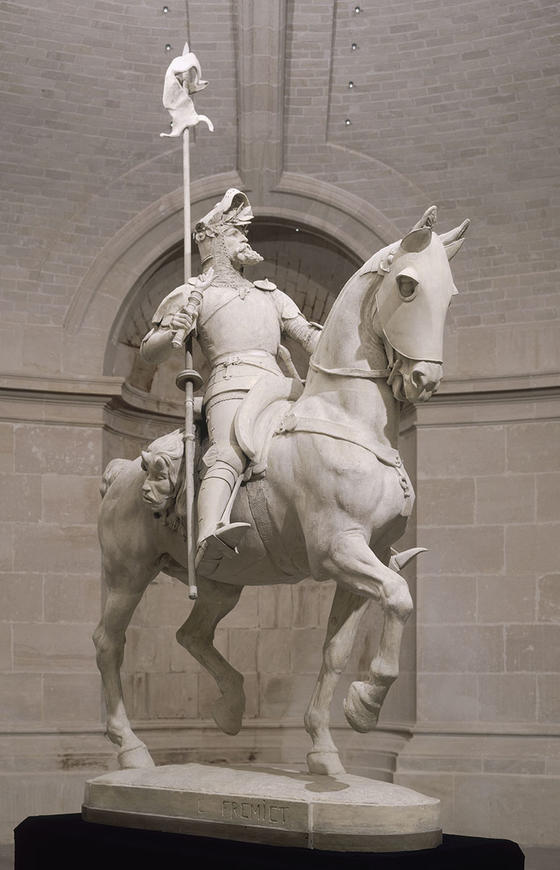The larger-than-life knight puffs out his chest and stares into the middle distance. Clad in his armour, he adopts a dignified pose. His raised great helm reveals a defiant gaze full of pride, and on his forehead rests the winner's crown. He is armed with a sword and holds a "hand of justice", a type of sceptre.
But look more closely, and you will see some strange details. Ahuman head hangs from his saddle. Behind him, a horned monster and goat's head are seemingly chained together. This knight is no mere soldier: he is a soldier of God. His mission is to track down demons, like this small griffin.
This work is in fact inspired by Victor Hugo's collection of poems Legend of the Centuries. The fifth poem in the the first series, published in 1859, is all about knights errant.
"Who are they? Whence come they? They are those who judge, they are those who punish and those who go."
In 1914, Lille City Council ordered a bronze version of this work. It was due to stand in the garden (now no more) at the entrance to the museum. Unfortunately, the declaration of the the First World War put paid to this project! Nonetheless, the plaster version expresses the knight's majesty and moral virtue.
Detail:
The horse is as protected as its master. It is wearing a chanfron, a piece of metal that covers the animal's head and has openings for its eyes and ears.
(Ref. Sc. 13)

The larger-than-life knight puffs out his chest and stares into the middle distance. Clad in his armour, he adopts a dignified pose. His raised great helm reveals a defiant gaze full of pride, and on his forehead rests the winner's crown. He is armed with a sword and holds a "hand of justice", a type of sceptre.
But look more closely, and you will see some strange details. Ahuman head hangs from his saddle. Behind him, a horned monster and goat's head are seemingly chained together. This knight is no mere soldier: he is a soldier of God. His mission is to track down demons, like this small griffin.
This work is in fact inspired by Victor Hugo's collection of poems Legend of the Centuries. The fifth poem in the the first series, published in 1859, is all about knights errant.
"Who are they? Whence come they? They are those who judge, they are those who punish and those who go."
In 1914, Lille City Council ordered a bronze version of this work. It was due to stand in the garden (now no more) at the entrance to the museum. Unfortunately, the declaration of the the First World War put paid to this project! Nonetheless, the plaster version expresses the knight's majesty and moral virtue.
Detail:
The horse is as protected as its master. It is wearing a chanfron, a piece of metal that covers the animal's head and has openings for its eyes and ears.
(Ref. Sc. 13)